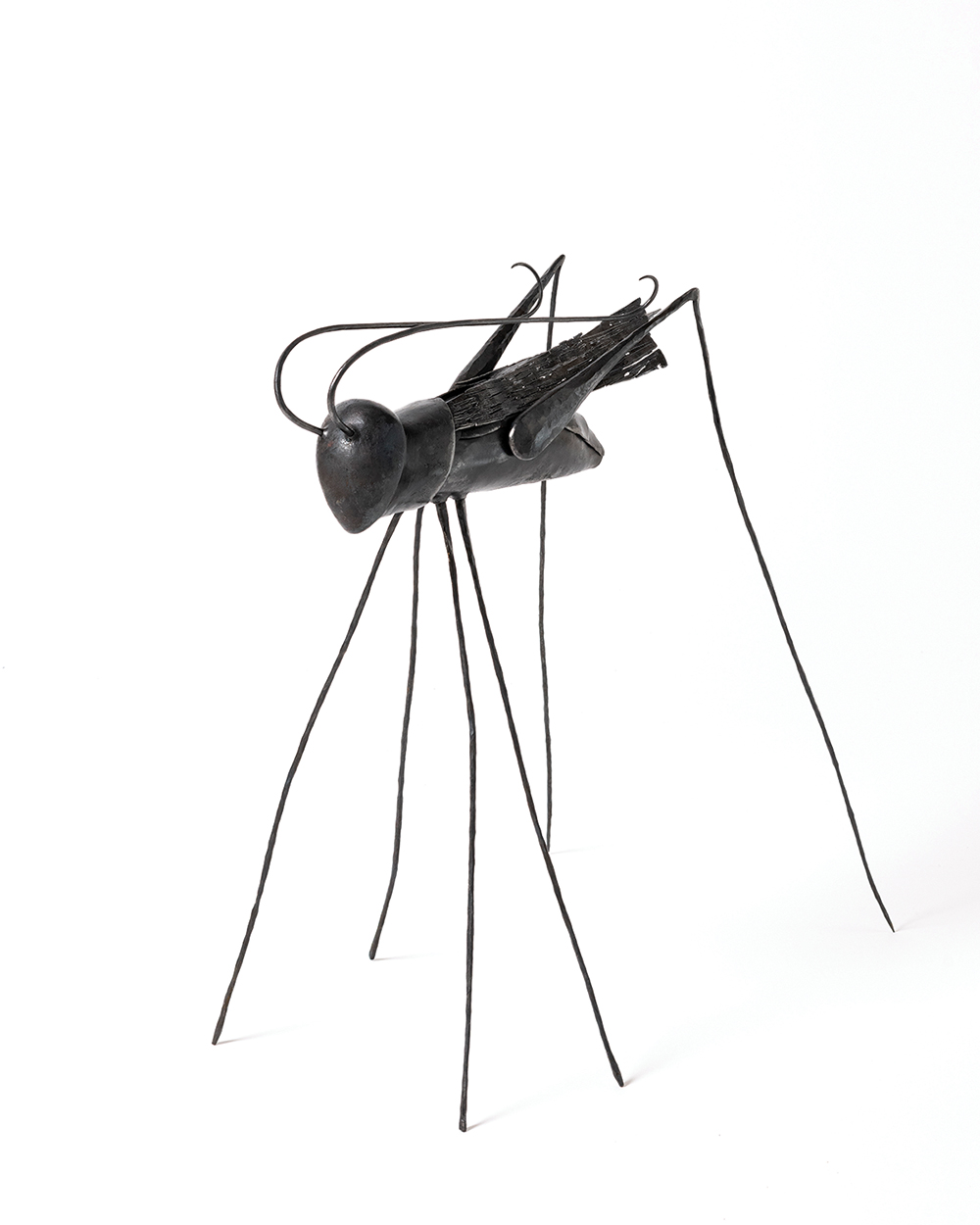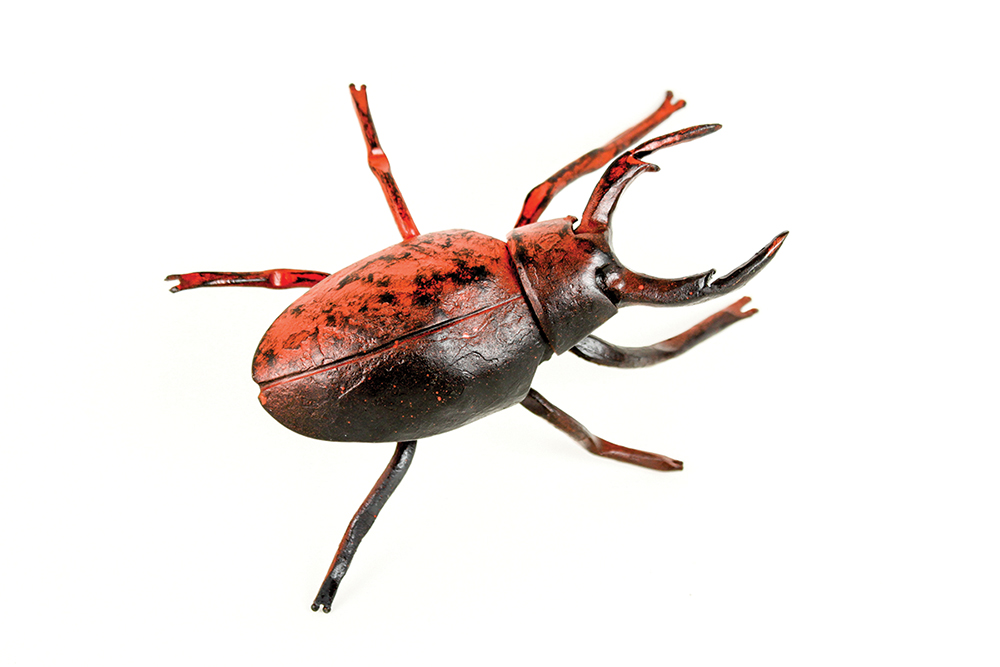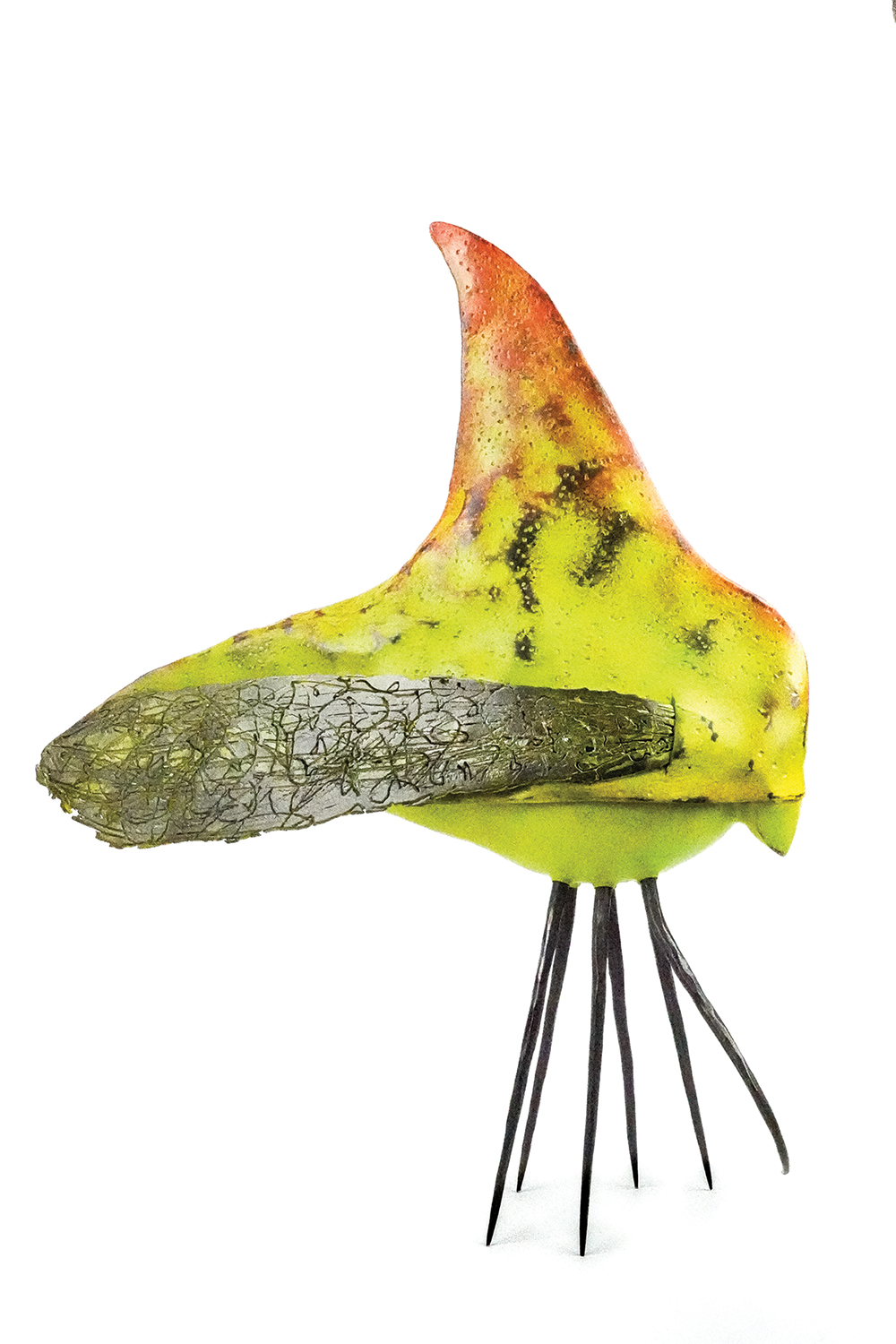Brasstown metalsmith pushes the boundaries of entomology

Metal artist Elizabeth Belz in her Brasstown sudio.
Portrait by Clay Nations Photography
Many people startle at the sight of a spider; most quake at the mere mention of a camel cricket. But Elizabeth Belz, the blacksmithing and metals coordinator at John C. Campbell Folk School, isn’t one of these people.
Working out of Brasstown, Belz manipulates metal into swarms of mosquitoes and colonies of ants. She also makes honey bees, stag beetles, grasshoppers, and stick bugs. Even chiggers — those tiny, blood-red parasites that burrow under the skin and make you itch like crazy — find a place in her studio.
“Bugs are fun,” says Belz. “People usually murder or ignore them, and I try to show them in a different way.”

A Minnesota native, Belz first discovered metalsmithing in 2008 when she went to Penland School of Craft to study woodworking. While there, she would sneak into the iron studio next door and observe. “I knew somewhere deep down that was the thing I wanted to be doing,” she says.
Post Penland, Belz bounced between folk schools while working to advance her career in the healthcare field. “I started going back to school with a focus in biology and had every intention of transferring into a pre-med program,” she explains.

Then, in 2016, she landed an 11-month craft-education internship at North House Folk School in Grand Marais, Minnesota. That internship changed her life. “I was studying for my MCATs when I dropped out and started blacksmithing full-time,” says Belz.
Today, she spends her time making bugs in Brasstown. Initially, her work was born out of a desire to recreate an insect’s likeness with exacting accuracy. She wanted an elephant beetle’s horn to protrude from its head at a 45-degree angle, for example, and for an acorn weevil’s snout to be perfectly proportionate to its body.

But in 2020, during a winter residency at Penland, the artist began sketching bugs quickly and without thought. This exercise produced arthropods and invertebrates that were curiously whimsical, like something that had jumped out of a children’s book or a science-fiction film. Belz couldn’t help but fall in love with their oddities.

“What started as a fascination with insect anatomy quickly evolved into an exploration of their narrative qualities and representational nature through the use of metal,” Belz explains. “By distilling the appearances of different species into general shapes, I push the limits of what is identified as ‘insect’ while urging others to consider how astounding insects truly are.”

This style informs Belz’s latest series, which she calls “Tall Bugs.” Fittingly, these sculptures stand four to five feet in height and evoke a range of responses. “I get everything from children being excited to adults backing away slowly,” Belz laughs.

Either way, the metalsmith provides a space for people to “take a moment to experience bugs” without the fear of creeping or crawling.
Elizabeth Belz, Brasstown. Belz is represented by the Craft Shop at John C. Campbell Folk School (1 Folk School Road, Brasstown, folkschool.org) and Gallery 164 (164 South Main St., Waynesville, gallery164.com). See more at elizabethbelz.com.
